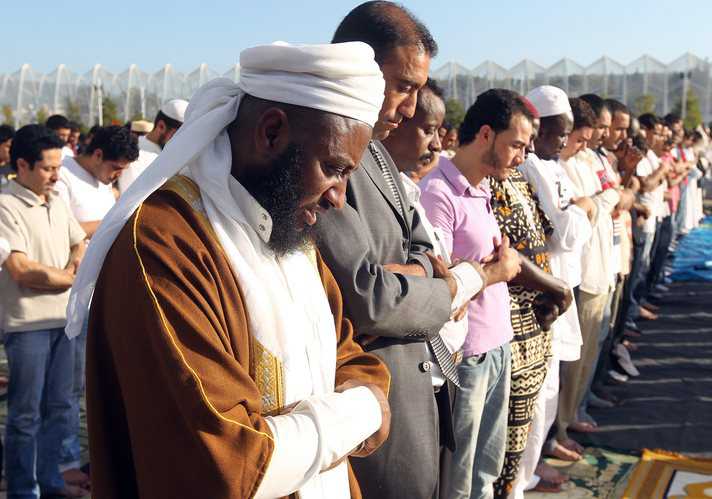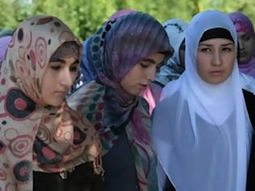By Agnes Czajka and Bora Isyar
Agnes Czajka joined the Department of Sociology at the University College Cork in January of 2012. Prior to joining UCC, she was Assistant Professor of Sociology at the American University in Cairo.
Bora Isyar is Lecturer in Politics, Department of Sociology, National University of Ireland, Maynooth.
Without doubt, throughout history, the question of democracy has predominantly been addressed through discourses of rights.1 Yet the space minority rights occupy in the Turkish case deserves particular attention, as it reveals that minority rights need to be addressed separately from so-called universal citizenship rights. What Turkey illustrates is that proliferation of citizenship rights does not necessarily mean a proliferation of minority rights, as minorities, despite being formally recognised as citizens, do not necessarily enjoy citizenship rights to the extent those recognised as bona fide members of the national community do. This dissonance between the rights of bona fide nationals and minorities, we argue, constitutes one of the biggest obstacles the Turkish Republic must overcome in order to be able to initiate a genuine democratisation process.
In the first part of this two-part series, we examine the historical context of the Greece-Turkey population exchange, focusing on the emergence of national identity as the dominant way in which to identify and govern populations, and the ascendancy of the racialised meaning of nation. It is in this context that the exchange of minority populations emerges not only as a possibility, but in fact, a necessity. As such, the context is crucial to an understanding of the nature of the minority question in contemporary Turkey.
All social and political phenomena are in essence historical, and their particular histories shape the manner in which they are interpreted today. We argue that to address the aforementioned dissonance we must first comprehend the manner and circumstances in which it emerged, and the power relations that were at play in the constitution of minorities as a particular group of citizens, distinct from bona fide nationals. We suggest that only by attending to these circumstances can we fully apprehend the salience of the minority rights question in Turkey, and the continued differentiation between bona fide and minority citizens. What is needed, therefore, is a revisiting of the tumultuous foundational years of the Turkish Republic, with an eye to the manner in which minorities were problematised at this particular historical juncture. The pivotal event in this problematisation, we suggest, was the population exchange between Greece and Turkey.
The most monumental of these exchanges was indeed the 1923 population exchange between Greece and Turkey. The Convention Concerning the Exchange of Greek and Turkish Populations, signed by the Government of the Grand National Assembly of Turkey and the Government of Greece on 30 January 1923 constituted the legal framework according to which the exchange was to take place. The rights and duties of groups who were exempt from the exchange were outlined in by the Treaty of Lausanne (henceforth, Treaty) signed by the Turkish, Greek, British, Italian, and Japanese governments on 24 July 1923. As such, most scholarly work on the population exchange has engaged in socio-legal analyses of the aforementioned documents.2
With the notable exception of Bruce Clark,3 these analyses have generally taken the “letter of the treaty”4 as not only expressive of what was happening, so to speak, on the ground, but also as representative of the subjects of the exchange, and the practices through which it materialised. It is our contention that in order to understand both the exchange and its legacy for contemporary minority politics, it is necessary to not only interrogate the legal framework according to which the exchange was to take place, but also the context in which it emerged as a possibility, the discourses through which it was constructed, and most importantly, the practices through which it actually took place, and the discourses through which it was constructed as an exchange between racialised, national populations. We suggest that by situating the population exchange in this broader historical and political context, and by attending to its role in the construction of a caesura between bona fide and minority citizens, we can more fully apprehend the nature of the minority question in contemporary Turkey, and the continuing disconnect between citizenship and minority rights.
The Context of 1923 Population Exchange Between Greece and Turkey
As previously mentioned, it is crucial to examine the historical context of the exchange as the exchange was itself a culmination of a series of events and struggles through which groups that were constituted as different on a variety of grounds began to be constituted as different on the grounds of a racialised, national identity. It is, of course, impossible for us to do justice to the manner in which groups were governed during the 600 year long history of the Ottoman Empire, let alone to the always complex and multi-layered manner in which individuals and groups governed and interpreted themselves, and constructed their own subjectivities.5 Yet, if we are to understand the population exchange and its legacy for minority rights in contemporary Turkey, we must attend at least to the nineteenth and early twentieth centuries, a transformative period in the governance of European (and Ottoman) subjects. It is in this period that national identity emerges as the dominant way in which to identify and govern populations, and the racialised meaning of nation gains ascendancy over competing meanings. These two transformations, we argue, are crucial to understanding the population exchange itself, and the shadow it continues to cast over minority politics in Turkey.
Our contention that national identity emerges at this historical juncture as the dominant way in which to identify and govern populations, and that the racialised meaning of nation gains ascendancy over competing meanings does not imply the absence or total annihilation of other meanings of nation, or for that matter, of religion as a category through which populations were identified and governed. The dominance of one discourse or meaning is never secure, and struggles to monopolise or determine the meaning of a particular concept never completely cease. It is possible, however, to interpret the nineteenth and early twentieth centuries as a moment in which the dominant meaning of nation was determined by the discourse of race, and the most fundamental and irreconcilable of differences became difference grounded in racialised, national identity. The context of the population exchange can thus be interpreted as one during which both the discourses of nation are able to monopolise the constitution of difference, and the discourses of race dominate the meaning of nation. It is this binary that not only conditions the possibility of a population exchange between Greece and Turkey, but makes such exchange seem both natural and desirable.
Attesting to the dominance of this binary is the failure of Ottomanism, a policy deployed to govern the population of the late Ottoman Empire. Operating for less than a century, Ottomanism was unsustainable at the moment of its emergence, and unable to preserve itself in the face of competing models of being and belonging. It is precisely its unsustainability that makes Ottomanism so revealing. Its disintegration discloses the obsolescence of non-racialised nationality as a basis of belonging, and the coming into dominance of the racialised nation as the only legitimate form of belonging, and the most primary fault line of difference. The failure of Ottomanism can thus be interpreted as the precipice between the possibility of differently constituted populations and minorities, and the closing off of such possibilities. It is the moment at which the possibilities of being, doing and thinking otherwise-than-the-racialised-nation recede into the distance, and populations and their politics appear as having been always already national.
The Collapse of Ottomanism and the Racialisation of Nation
Before attending to the collapse of Ottomanism, it is necessary to take a brief look at the perceived unsustainability of the millet system6, to which Ottomanism was one response. The late Ottoman Empire was shaken by a number of national liberation movements whose aim was the establishment of sovereign states for communities whose national consciousness was on the rise. With each passing year, the rulers of the empire found it increasingly difficult to sustain its unity and preserve its territorial integrity. Greek independence (in 1821) solidified their belief that the millet system was no longer sustainable. A bond between the distinct populations of Ottoman subjects, and a different way of arranging relations between them and the ruling bodies were necessary if the empire were to survive7. What emerged was the policy of Ottomanism, and its attendant Ottoman citizenship.
Article 8 of the 1876 Ottoman Constitution defined Ottoman citizenship in the following manner: “Irrespective of religion, race, creed, or sect, every person who is a subject of the Ottoman Empire is called an Ottoman citizen”.8 Article 16 of the same constitution declared all Ottoman citizens to be absolutely equal before the law and in the eyes of the state.9 This was the first time in the history of the empire when all subjects were recognised to be equal before the law, and when all inhabitants were supposed to engage in public life (in the broadest sense of the term) as Ottomans, and not in accordance with their religious confessions.10 In addition to the legal construction of Ottoman citizenship, the state initiated numerous reforms designed to fabricate this universal citizenry. Non-Muslims were authorised to take up official government posts;11 schools for pupils of all religious confessions were opened;12 the poll tax, previously levied exclusively on non-Muslim subjects of the Empire had been abolished in 1855.13 That same year non-Muslims were, for the first time conscripted into the army.14 What needs to be kept in mind, however, is that legal and discursive declarations of universality are just that – legal and discursive declarations that tell us little about the manner in which subjects themselves interpreted and practiced Ottomanism. As the relatively swift disintegration of Ottomanism reveals, the subjects that this universalist policy attempted to produce were not willing to enact themselves as such.
Like the unsustainability of the millet system before it, the unsustainability of Ottomanism shows the slow but steady closing off of the possibilities of thinking about people in non-racially defined national terms. The unsustainability of millet system marked the foreclosure of the possibility of constituting and governing the inhabitants of the empire in non-national terms. The unsustainability of Ottomanism, in turn, marked the foreclosure of the possibility of constituting the national in non-racial terms. Thus, the question at hand is this: Why were non-national (specifically non-racially defined national) ways of constituting and governing people increasingly closed off in the late Ottoman Empire? The answer lies in the rise, at the turn of the century, of a particular kind of nationalism, and its attendant constructions of nation.
Hannah Arendt’s15 analysis of the origins of totalitarianism offers an insight into this historical struggle, and thus, into the unsustainability of Ottoman citizenship. Arguing that both as a concept and an institution the state is much older than nationality, Arendt suggests that prior to the nineteenth century, the state’s function was the protection of all those inhabiting its territory.16 The nineteenth century identification of the state with nation, or “the conquest of the state by the nation”17 precipitated a significant transformation in the function of the state. “In the name of the will of the people,” argues Arendt, “the state was forced to recognise only ‘nationals’ as citizens, to grant full social and political rights only to those who belonged to the national community by right of origin and fact of birth.” It was thus, “partly transformed from an instrument of the law into an instrument of the nation”.18
Yet, it was only once the nation was constructed as a natural community that the conquest of the state by the nation could be realised.19 For the nation’s dominance to become naturalised and taken-for-granted it had to be constructed and enacted as something grounded in and defined through elements that were essential and non-transferable. Thus, as Étienne Balibar argues, neither language (which could be acquired), nor culture (which could be adopted) sufficed;20 only race, biologically defined, could naturalise the nation and thus construct it as the only legitimate basis for belonging, and the only natural form of community. The naturalisation of the nation form, in other words, could only take place through its racialisation.21 This racialisation of the nation form (and the naturalisation of the national way of being and the national order of things) was in turn made possible by the contemporaneous coming into dominance of race as the most fundamental category into which the peoples of the world could and should be divided.
It was in this manner that the racialised national started to provide the dominant lens through which the world was interpreted, and began to give sense and meaning to the world. The failure of Ottomanism, and emergence of the “non-Muslim issue” as a national minority issue needs to be interpreted against this background. The emergence of national liberation movements, the conquest of state by nation, and the racialisation of the nation have a pivotal and detrimental effect on Ottomanism. It is in their wake that Ottoman citizenship begins to be perceived as unnatural, precisely because it is a form of belonging that is non-national, in the racialised, naturalised sense of nation that is dominant at the time. A brief interrogation of the debates in the empire on the causes of Ottomanism’s failure points clearly in this direction.
According to one set of arguments, the failure of Ottomanism could be attributed to the inauthenticity of the bond it sought to construct. Ottomanism, it was argued, attempted to fabricate a bond between peoples who in fact “naturally” belonged to different national communities. What Ottomanism attempted to transgress through the construction of the Ottoman citizen was not religious differences (already perceived as an inauthentic way of belonging) but innate and essential national differences. In this vein, Yusuf Akçura, one of the founding fathers of Turkish nationalism, argued that Ottomanism had arrived in the empire a century later than it should have. Now, such an artificial bond would most certainly be overshadowed by the natural and instinctual will-to-national-existence of the various peoples who comprised the empire.22 The second set of arguments likewise took the existence of racialised national identities for granted. However, it interpreted Ottomanism as a euphemism for Turkish nationalism. According to this set of arguments, proponents of Ottomanism were actually Turkish nationalists, masking their true agenda behind the ostensibly universalist principle of Ottoman citizenship.23
While both of these sets of arguments (both taking as given that national belonging was the natural, instinctual way of belonging) gained immense strength in the late Ottoman Empire, it was the 1912-3 Balkan Wars that effaced the Ottoman as a potential political subjectivity and ground of belonging.24 Again, what is important for the purposes of the argument being made in this paper are dominant interpretations of the Balkan Wars circulating in the late Ottoman Empire. Like in the case of the aforementioned debates regarding Ottomanism, the ‘validity’ or ‘truthfulness’ of these accounts is immaterial. What matters is that at this time accounts that divided Ottoman citizens into racial-national groups emerged and gained strength and legitimacy in the political discursive field. Once again, two dominant interpretations were in circulation. The first interpretation attributed the losses suffered by the empire at least in part to the unwillingness of some Ottoman citizens (especially those of Greek and Armenian descent) to fight in the name of the empire.25 The second, and related interpretation attributed the losses to the fact that the empire was fighting nascent nation-states, each comprised of a single race whose members always acted as one.26 As one of the founders of Turkism put it, “it was only the pride in one’s racial being that could bring success to the nation in war, in cultural development, and in political spheres”.27
It is in this context, and at the intersection of these discursive strands that Ottomanism becomes not only unsustainable, but in fact undesirable and unnatural as a policy through which to forge a people. The nation form (now defined through racial discourse) emerges as the only natural and viable basis for community formation, and Turkism, a nationalist movement that racialises Turkishness and constructs it as the determinative identity of the citizens of the empire (and later republic) attains dominance.28 As it is the racial homogeneity of a polity that makes it viable and secures its existence, what matters most for Turkism is not the religious persuasion of the population of the empire, but the racially defined nations to which they belong. It is in this context that the minority emerges as the national minority and as a problem.29 It is also in this context that the exchange of minority populations emerges as a possibility.
1. See Frank Cunningham, Theories of Democracy: A Critical Introduction (Routledge: London, 2002) and Charles Tilly, Democracy (Cambridge University Press: Cambridge, 2007). For an example of the separation of the questions of democracy and rights, see Stephen White, ‘Is Russia a Democracy?’, Unpublished paper delivered at Centre for the Study of Wider Europe, National University of Ireland, Maynooth, December 13, 2010.
2. See Alexis Alexandris, ‘Religion or Ethnicity: The Identity Issue of the Minorities in Greece and Turkey’, in R. Hirschon, ed., Crossing the Aegean: An Appraisal of the 1923 Compulsory Population Exchange Between Greece and Turkey (New York: Berghahn, 2003), 117-32; Raoul Blanchard, ‘The Exchange of Populations between Greece and Turkey’, Geographical Review, 15, 3 (1925), 449-56; Van Coufoudakis, ‘International Law and Minority Protection: The Fate of Greeks of Imbros and Tenedos’, Mediterranean Quarterly, 19, 4 (2008), 14-28; M. A. Gökaçtı, Nüfus Mübadelesi: Kayıp Bir Kuşağın Hikayesi (İstanbul: İletişim, 2002); Anastasia Lekka, ‘Legislative Provisions of the Ottoman/Turkish Governments Regarding Minorities and Their Properties’, Mediterranean Quarterly, 18, 1 (2007), 135-154.
3. Bruce Clark, Twice a Stranger: How Mass Expulsion Forged Modern Greece and Turkey (London: Granta, 2006).
5. This history has been addressed by others including Benjamin Braude, ‘Foundation Myths of the Millet System’, in B. Braude and B. Lewis, ed., Christians and Jews in the Ottoman Empire, Volume I: The Central Lands (New York: Holmes and Meier, 1982); Roderic Davison, ‘Turkish Attitudes Concerning Christian-Muslim Equality in the Nineteenth Century’, American Historical Review, 59, 4 (1954), 844-64; Fatma Göçek, Rise of the Bourgeoisie, Demise of the Empire: Ottoman Westernisation and Social Change (New York: Oxford University Press, 1996); Daniel Goffman, The Ottoman Empire and Early Modern Europe (Cambridge: Cambridge University Press, 2002); Halil İnalcık, The Ottoman Empire: The Classical Age, 1300-1600 (London: Phoenix, 1973); Halil İnalcık, From Empire to Republic: Essays on Ottoman and Turkish Social History (İstanbul: ISIS, 1995); Kemal Karpat, The Politicisation of Islam: Reconstructing Identity, State, Faith, and Community in the Late Ottoman State (New York: Oxford University Press, 2001); Riva Kastoryano, ‘From Millet to Community: The Jews of Istanbul’, in A. Rodrigue, ed., Ottoman and Turkish Jewry: Community and Leadership (Bloomington, IN.: Indiana University Press, 1992); Donald Quataert, The Ottoman Empire, 1700-1922 (Cambridge: Cambridge University Press, 2000); Victor Roudemetof, ‘From Rum Millet to Greek Nation: Enlightenment, Secularisation, and National Identity in Ottoman Balkan Society, 1453-1821’, Journal of Modern Greek Studies, 16 (1998), 11-48.
6. For detailed analyses of the millet system see Braude, ‘Foundation Myths’; Davison, ‘Turkish Attitudes’; İnalcık, The Ottoman Empire; Aron Rodrigue, ‘Difference and Tolerance in the Ottoman Empire’, SEHR, 5, 1 (2005).
7. Renee Worringer, ‘‘Sick Man of Europe’ or ‘Japan of the Near East’?: Constructing Ottoman Modernity in the Hamidian and Young Turk Eras’, International Journal of Middle East Studies, 36, 2 (2004), 209.
8. Quoted in Şeref Gözübüyük and Suna Kili, Türk Anayasa Metinleri: Sened-i İttifak’tan Günümüze (İstanbul: Türkiye İş Bankası Yayınları, 2000), 43.
9. Gözübüyük and Kili, Türk, 44.
10. Bora Isyar, Fuat Keyman, Bahar Rumelili, ‘Non-Muslim Acts of European Citizenship’, Report prepared for ENACT: Enacting European Citizenship project funded by the European Commission, 2009.
11. Selçuk Somel, ‘Osmanlı Modernleşme Döneminde Periferik Nüfus Grupları’, Toplum be Bilim, 83 (2000), 179.
12. Mehmet Alkan, ‘Resmi İdeolojinin Doğuşu ve Evrimi Üzerine Bir Deneme’, in M. Alkan, ed., Modern Türkiye’de Siyasi Düşünce, Cilt I: Cumhuriyet’e Devreden Düşünce Mirası, Tanzimat ve Meşrutiyet’in Birikimi (İstanbul: İletişim, 2001), 379.
13. Gülnihal Bozkurt, ‘Tanzimat and Law’, in Tanzimat’ın 150. Yıldönümü Uluslararası Sempozyumu (Ankara: TTK, 1994), 284.
14. Naim Turfan, Rise of Young Turks: Politics, the Military, and Ottoman Collapse, (London: I.B. Tauris, 2000), 19.
16. Arendt, Origins, 230.
17. Arendt, Origins, 230.
18. Arendt, Origins, 230.
19. Bora Isyar, ‘Invention of the Turk: A Genealogy of the Nation’, Ph.D. thesis, York University, 2007.
20. Balibar, ‘Nation Form’, 143.
21. A note of caution is necessary regarding the relationship between racialisation and racism. As Foucault argues, racism is a technology made possible by and grounded in the process of racialisation, where racialisation is understood as a process through which societies, peoples and nations are defined in racial terms, and as such, their existence as a group is naturalised (Foucault, Society, 65). Racism is thus a chapter in the history of racialisation. As such, the absence of explicit racism in a polity does not necessarily mean it is not a racialised one.
22. Yusuf Akçura, Üç Tarz-ı Siyaset (Ankara: TTK), 28-34.
23. Karpat, Politicisation, 320.
24. Bora Isyar, ‘The Origins of Turkish Republican Citizenship: The Birth of Race’, Nations and Nationalism, 11, 3 (2005), 344-8.
25. Isyar, ‘Origns of Turkish Republican Citizenship’, 346. For examples of this argument see, Yusuf Akçura, ‘Yeni Hayata Doğru’, Türk Yurdu, 3, 2 (1912), 1-3; Şevket Süreyya Aydemir, Suyu Arayan Adam (İstanbul: Remzi, 1967); Cemal Kutay, 1913’te Garbi Trakya’da Kurulan İlk Türk Cumhuriyeti (İstanbul: TTK, 1962); Ömer Seyfettin, Efruz Bey (İstanbul: Kanaat, 1914).
26. Isyar, ‘Origns of Turkish Republican Citizenship’, 346.
27. Ziya Gökalp, Türkleşmek, İslamlaşmak, Muasırlaşmak (İstanbul: Türk Kültür Yayınları, 1913), 24.
28. Isyar, ‘Origns of Turkish Republican Citizenship’, 343.
29. We use the terminology of problem in the Foucauldian sense, to indicate that which becomes an object of debate, interpretation or struggle, or that which emerges at a particular time as a matter of concern, as something to be attended to, addressed or remedied.






